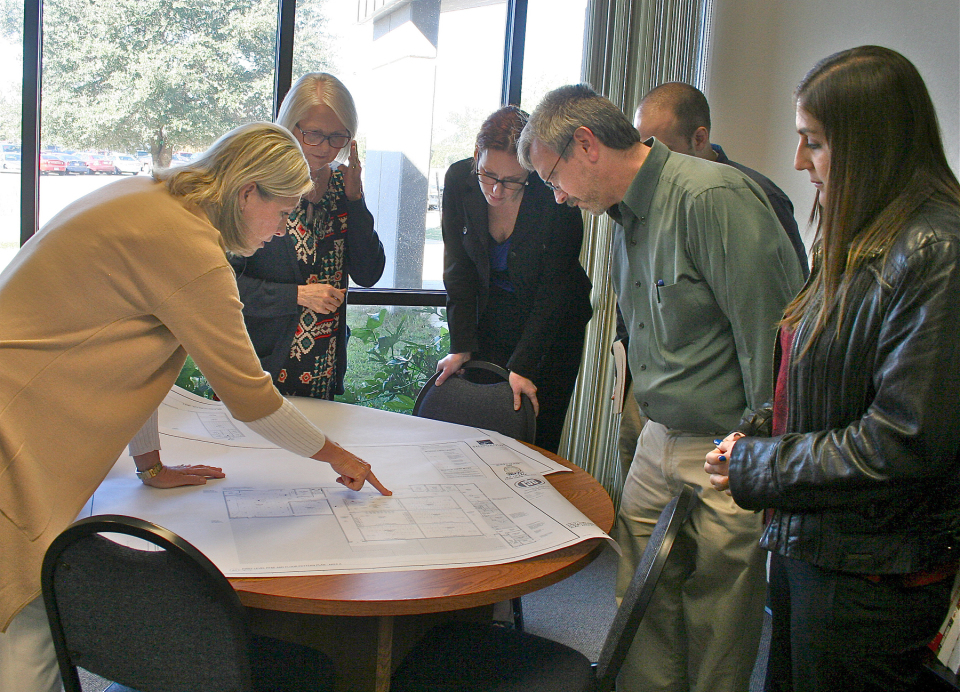
Jim Rogers with KSST sat down for an interview with Dr. Pam Anglin, President of Paris Junior College, regarding new and exciting opportunities PJC has to offer as well as the annexation proposal. The proposal is set to be voted on in the November election. More information regarding the annexation may be found in this previous article.
Dr. Anglin, Paris Junior College has some very significant things ahead?
“We do. We are planning on having an annexation referendum on the November 8th ballot that would give individuals in Hopkins County an opportunity to vote on whether or not to come into the taxing district and become a part of the college. By annexing, adding to, the taxing district bringing in additional counties it will secure the long term future of a community college in this area.”
How does expanding the district secure that future?
“Well, the legislature’s last three session has looked more for local support. As they talk about closing some community colleges or consolidating colleges they’re gonna look at those that have more local support, and by local support we are talking about tax base. Right now, PJC’s tax base is 44 square miles out of the 3,848 square miles it serves. So, we’re going to give everyone in that 3,848 square miles an opportunity to vote and make a decision this November.”
What percentage of students to do you at PJC receive compared to students that go outside of the area?
“When you look at our student population, if you look at our 5,000+ students, 84% of them are out of district, 15% are in district. When you look by county there are 1300 students from Hopkins County alone at the college. ”
When you say 1300 students, are you talking specifically the local campus here in Sulphur Springs or both campuses?
“On all three campuses. For example, if they’re in Nursing they’re gonna be on the Paris Campus right now.”
When you look at the necessity of that local support, what are you looking for in local support?
“It would be 8 1\2 cents per $100 valuation. So, if you have property that is valued on the tax rolls at $100,000.00 it would be $85 a year, $7 a month.”
That is lower than the original numbers?
“It is. I’ve done new calculations based on the 2016 assessed values of the entire 5 county area and 8 1/2 cents will make up that difference between out of district and in district tuition cost plus provide extra revenue to add to the programs that we have at the campus here.”
We talked about students, programs and also with industry here in Sulphur Springs, we have a unique industry blend, how do you serve that?
“We serve it in a couple of different ways. One is in the workforce training that we do. On this campus here we have the CNC Machining Program that will start up this fall . We have Machatronics and that’s big for the industry in Sulphur Springs, all the automated equipment in the food industry. We have Welding. We are opening up night program in welding this fall, so we’ll be running a day program and a night program.”
What advantage to the tax payer is there to be in the district?
“To be in the district, it is making sure that there continues to be accessible, affordable education for students wanting to get their first two year and transfer to a university or for the students wanting to get work place skills and get a job and stay in this area. That’s a big benefit, plus lower tuition. Instead of paying out of district tuition, they’re in district. This fall, out of district is $100 per credit hour and in district is $55 per credit hour. A lower cost for dual credit tuition also, plus more programs here, more trained workers with different programs.”
Is there a break for senior tax payers?
“There are. As far as taxes go, seniors would have a $10,000 exemption off the top and then taxes would be frozen for the seniors. We know that the college, if you look at the local hospitals, we train most of the nurses. If you call an ambulance, chances are that the paramedic or EMT on that ambulance was trained by us. Radiology technicians, surgical techs, medical record coders. So we’re training all of those people for the area. The college is training all of those and if the college went away, those workers would eventually go away. So for the people who don’t have young people coming up, it is an investment in the future of the county and in their own future and who is going to be taking care of them eventually.”
Do you find that the majority of the students who go to PJC basically remain in this area?
“They do. One of the things about this region, there are a lot of place bound people and they’ve grown up here, have relatives here, they’re invested in this area and have no plans on leaving. So it’s important to get them training to where they can get good, local jobs and make a living to support a family. I want young people that were like I was to have a chance. I grew up on a farm. I was the first one in my family to ever go to college and I didn’t know what to do or where to start.”





